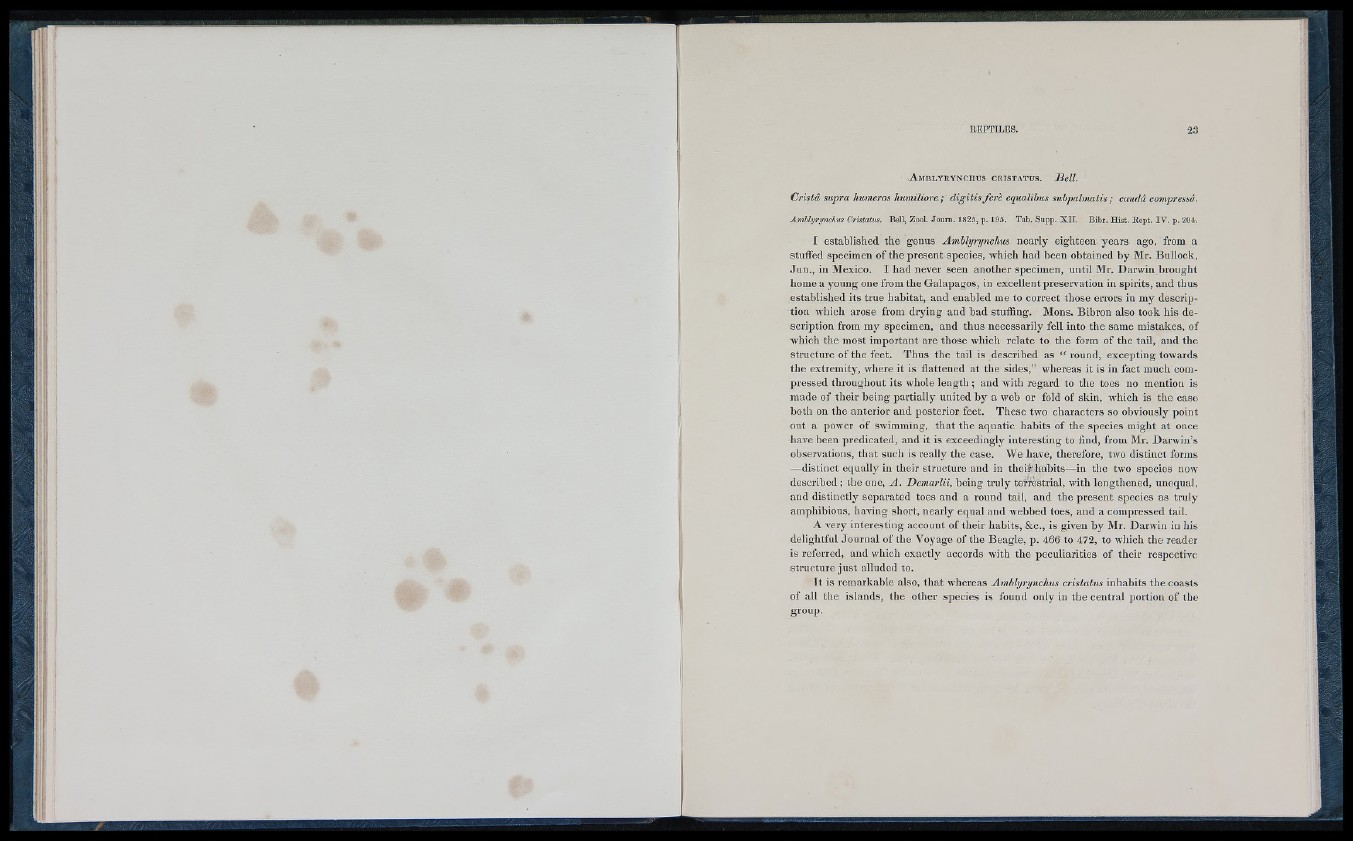
A m b l y r y n c h u s c r i s t a t u s . Bell.
Crista supra kumeros humiliore ; digitisferh equalihus suhpalmatis; caudd compressd.
Amblyrynchus Cristatus. Bell, Zool. Journ. 1825, p. 195. Tab. Supp. X I I. Bibr. Hist. Rept. IV . p. 204.
1 established the genus Amblyrynchus nearly eighteen years ago, from a
stuffed specimen of the p resent species, which had been obtained by Mr. Bullock,
Jun., in Mexico. I had never seen another specimen, until Mr. Darwin brought
home a young one from the G alapagos, in excellent preservation in spirits, and thus
established its true habitat, and enabled me to correct those errors in my description
which arose from drying and had stuffing. Mons. Bibron also took his description
from my specimen, and thus necessarily fell into the same mistakes, of
which the most important are those which relate to the form of the tail, and the
structure of the feet. Thus the tail is described as “ round, excepting towards
the extremity, where it is flattened a t the sides,” whereas it is in fact much compressed
throughout its whole le n g th ; and with regard to the toes no mention is
made of their being partially united by a web or fold of skin, which is the case
both on the anterior and posterior feet. These two characters so obviously point
out a power of swimming, th a t the aquatic habits of the species might a t once
have been predicated, and it is exceedingly interesting to find, from Mr. Darwin’s
observations, th a t such is really the case. We have, therefore, two distinct forms
—distinct equally in their structure and in th e il'h ab its—in the two species now
described ; the one, A . Demarlii, being truly terrestrial, with lengthened, unequal,
and distinctly separated toes and a round tail, and the present species as truly
amphibious, having short, nearly equal and webbed toes, and a compressed tail.
A very interesting account of their habits, &c., is given by Mr. Darwin in his
delightful Journal of the Voyage of the Beagle, p. 466 to 47*2, to which the reader
is referred, and which exactly accords with the peculiarities of their respective
structure ju s t alluded to.
I t is remarkable also, th a t whereas Amblyrynchus cristatus inhabits the coasts
of all the islands, the other species is found only in the central portion of the
group.